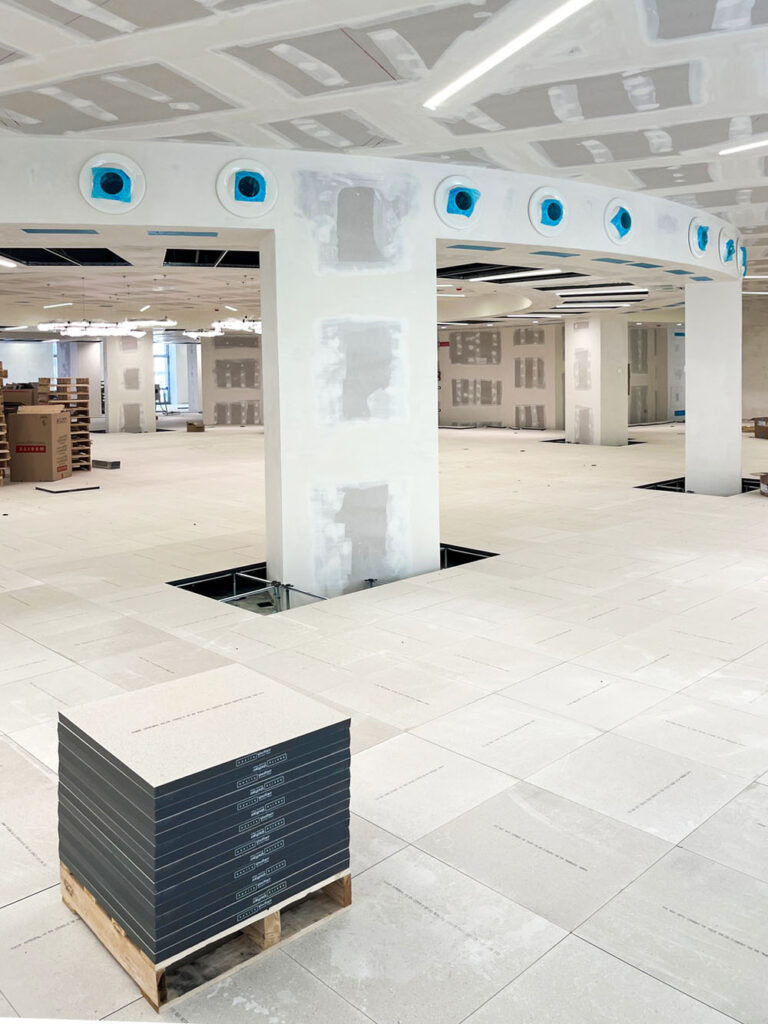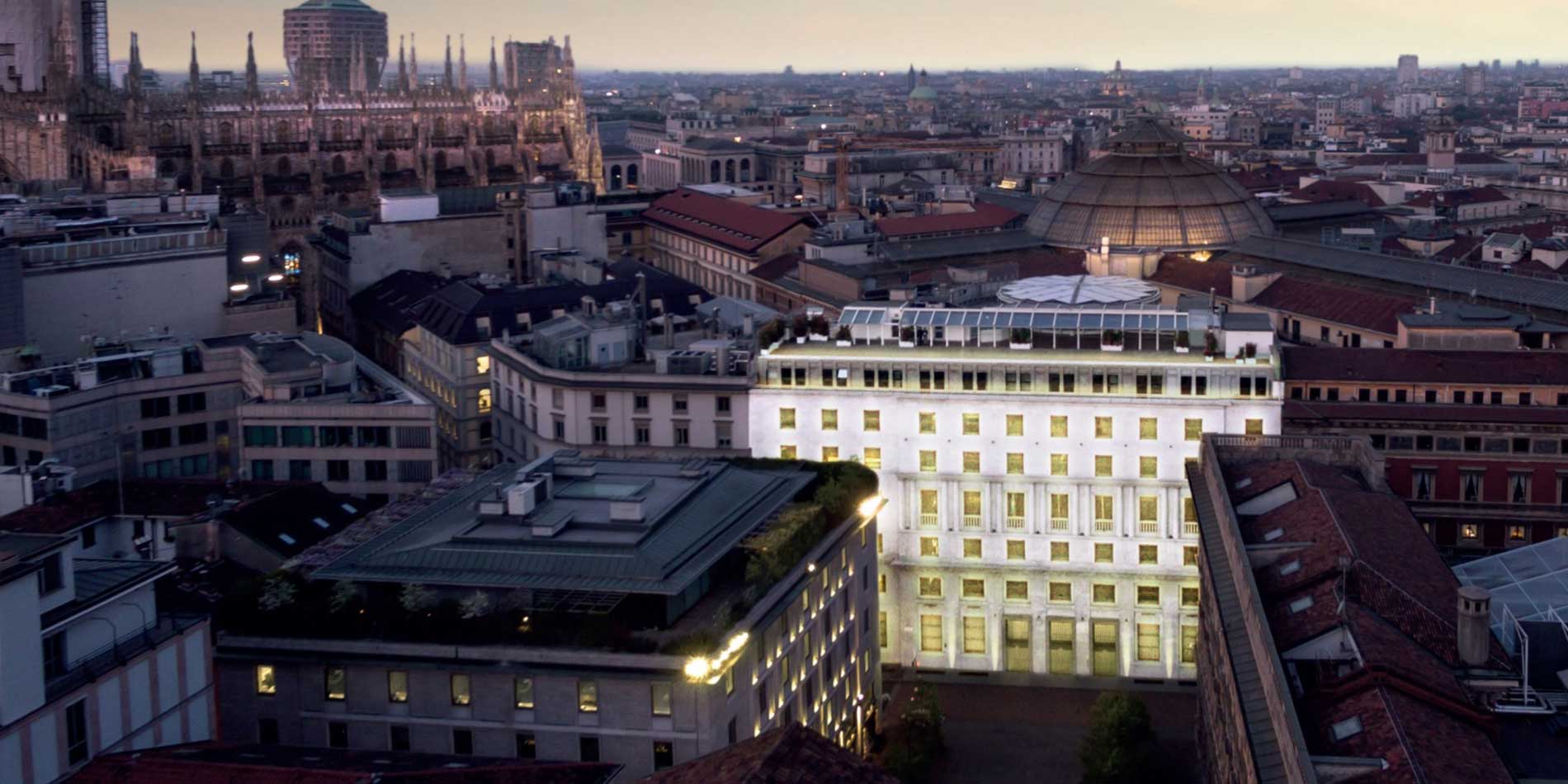
Home / News / Progetti /
An iconic and exclusive real estate in the heart of Milan’s historic centre, first seat of the Teatro Manzoni, then Bnl’s and Bnp Paribas’: Palazzo San Fedele, an architectural jewel of the 19th century, is preparing for the new asset in luxury retail as the new Bottega Veneta headquarters . In the redevelopment project the raised floors Nesite, a modern solution capable of communicating with the past without damaging its historical value, preserving and enhancing it.
PALAZZO SAN FEDELE RENOVATION, WHY the RAISED FLOORS
When we talk about renovation or recovery of historical buildings, raised floors become a technology of grafting between the past and progress, able to integrate the comforts of contemporary living in the total absence of masonry work, while keeping the architectural framework intact.
In the case of Palazzo San Fedele in fact, owned by COIMA Sgr, the complete renovation of the building designed by Studio Asti Architettiwill lead to the creation of spaces with high environmental and technological standards, in full respect of the building’s historical identity.
CHARACTERISTICS OF THE SYSTEM SUPPLIED
The Palazzo San Fedele project involved the supply and installation of 5,000 square metres of raised floor, consisting of 30 mm thick calcium sulphate panels, EPD certified. The use of Nesite raised floors thus fits into the green perspective of the project, particularly focused on eco-sustainable materials and energy efficiency, in view of the LEED certification.
From a functional point of view, the system was designed for the new mixed office/retail use of the building as the future headquarters of the Bottega Veneta brand. In this regard, the walking surface has been raised by 35 cm, providing easy accessibility to the technical compartment for the complex plant engineering configuration. Palazzo San Fedele will in fact also be a smart building, thanks to the application of advanced communication technologies and systems, which will allow remote control.
Finally, the load-bearing structure of the raised floor has been fitted with acoustic pads in order to increase its soundproofing and sound-absorbing performance. From an aesthetic point of view, on the other hand, the system offers maximum flexibility as it is designed to receive any type and format of loose-lay finishings.
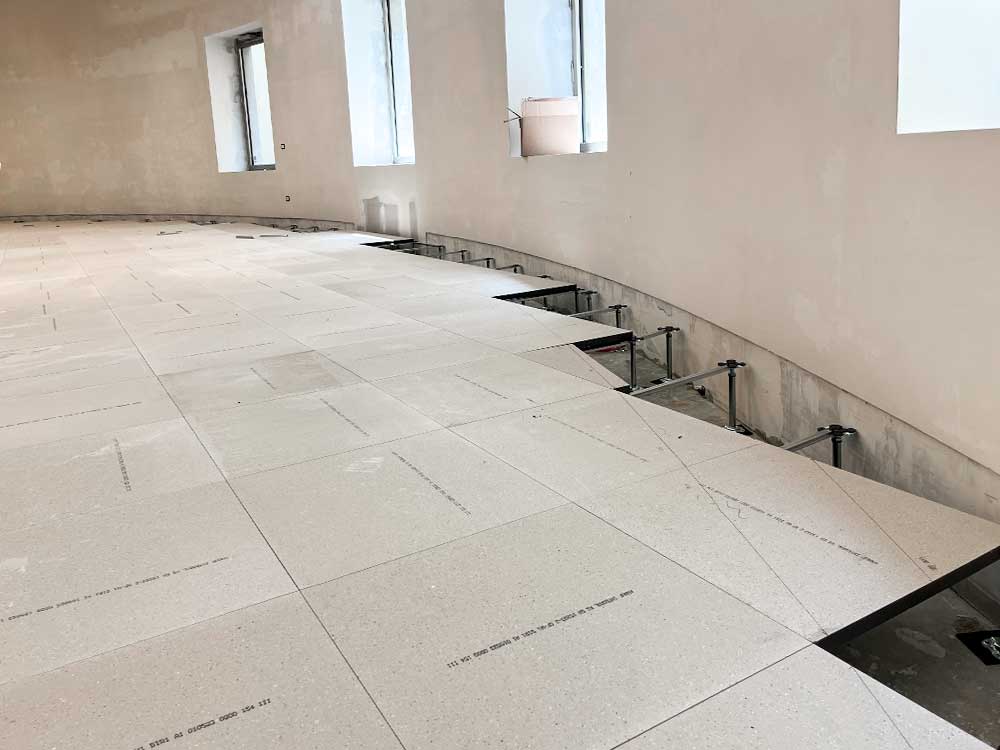
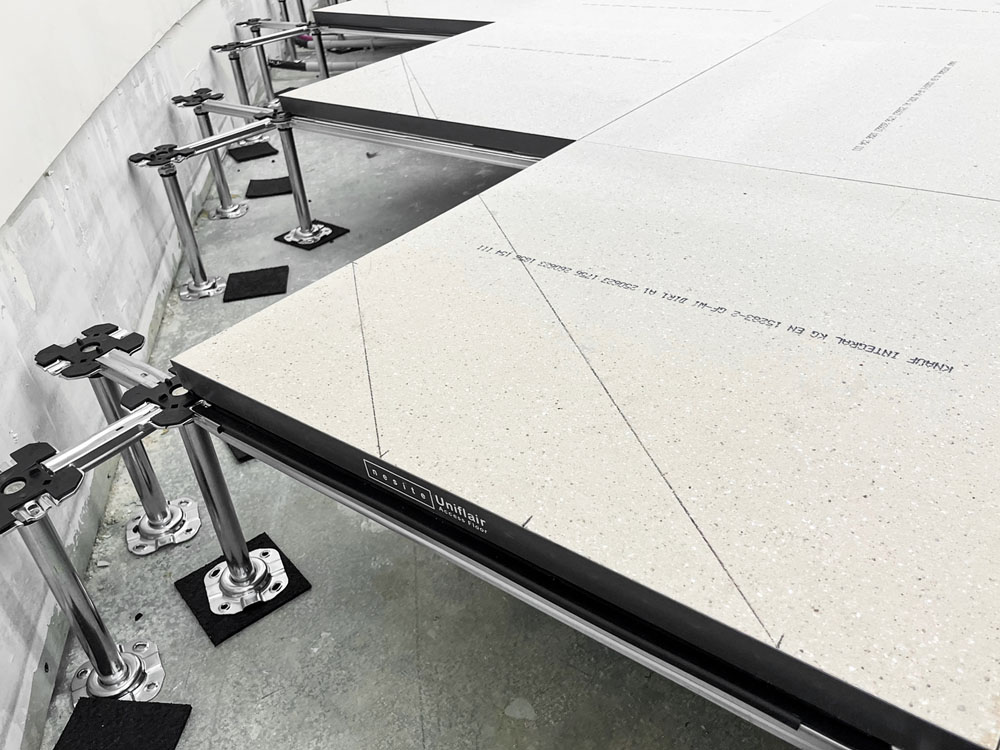
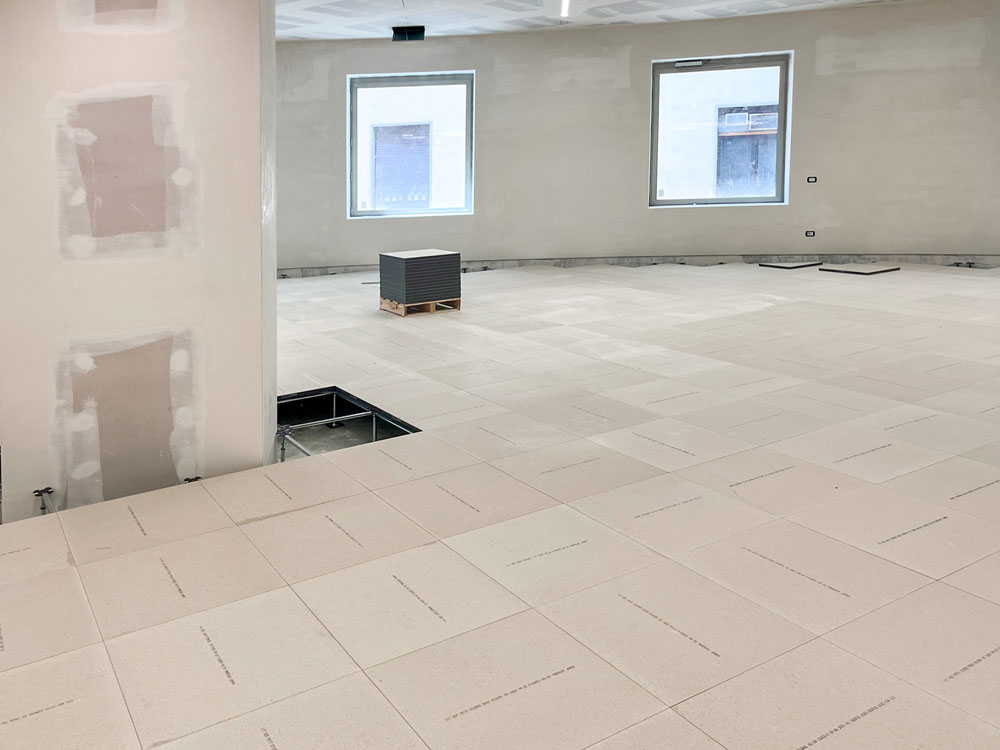
RAISED FLOORS AND HISTORICAL BUILDINGS, MAIN ADVANTAGES
Preserving and enhancing the architectural heritage: the raised floor is a modular system that can fit into any historical context thanks to its non-invasive features. The dry installation, the creation of the technical space dedicated to the plant layout and the multiple finishings available allow an easy integration of modern living standards while preserving the original structure.
Structural stability: raised floors reduce the load bearing on the foundation and distribute the weight equally over the entire structure. This allows historic buildings to resist over time, ensuring long-term preservation.
Insulation: the presence of the underfloor technical compartment contributes to improving the thermal performance of the environment, preventing structural damage due to moisture, which is more common in historic buildings.
Efficient maintenance: the raised floor is a system that can be inspected, thus allowing access to the underfloor system to carry out any maintenance operation quickly and easily, optimising costs.
Technical and aesthetic flexibility: in the case of historic buildings, raised floors support the project in its entirety thanks to the many performance and aesthetic variations available, which can be fully customised according to the existing architectural scenario.
Sustainability: thanks to the company’s constant commitment to improving the quality of the supply chain and optimising production processes, Nesite’s floating floor solutions meet the standards of the various types of environmental building certifications.
Some emblematic projects
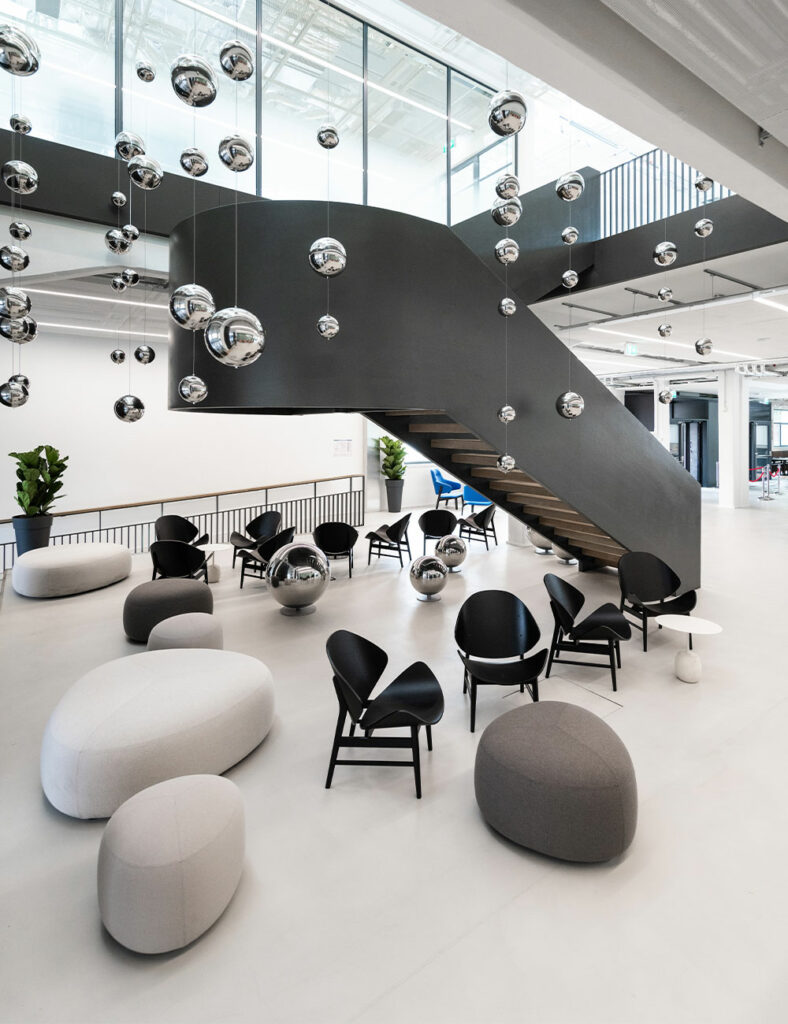
REDEVELOPMENT OF RICHARD GINORI AREA, Milan
Renovation of industrial building, now new WPP headquarters. The project involved us in the supply of the entire raised floor with different solutions, dictated both by the multiple uses of the spaces and by the high standards of sustainability required by BREEAM certification.
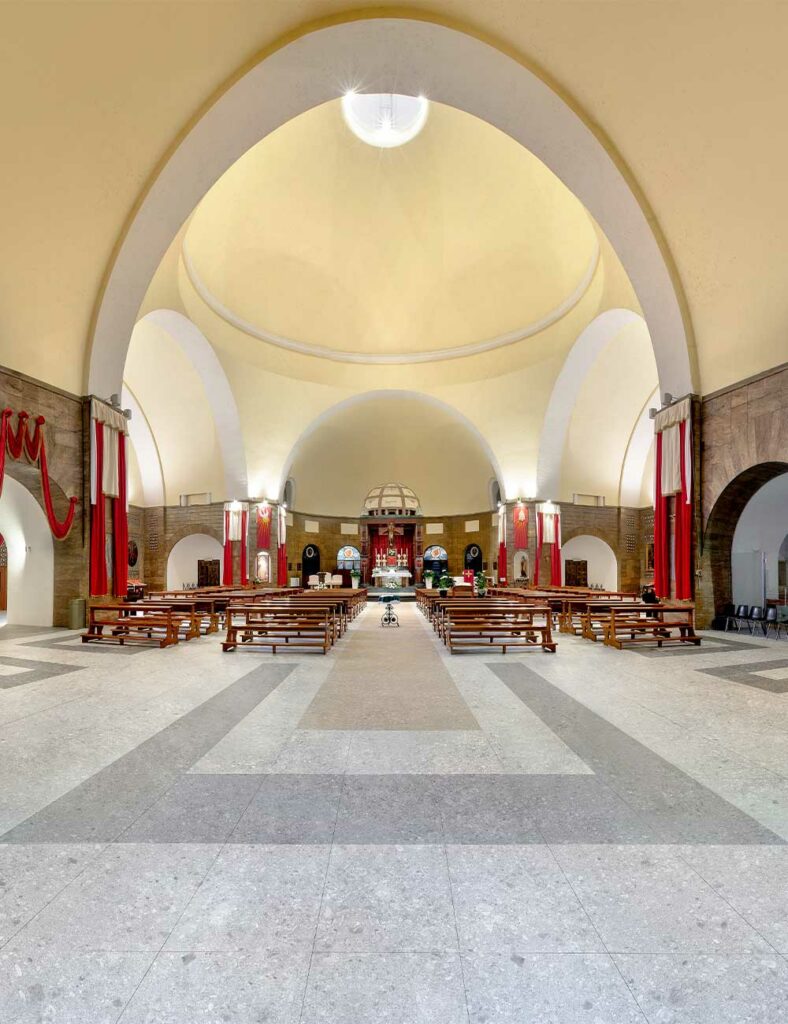
ST. MICHAEL CHURCH, Milan
The project shows a case history of a conservative renovation of a historical church. The role of the raised floor becomes central in the energy efficiency of the building thanks to the use of the fully accessible Diffuse radiant system.
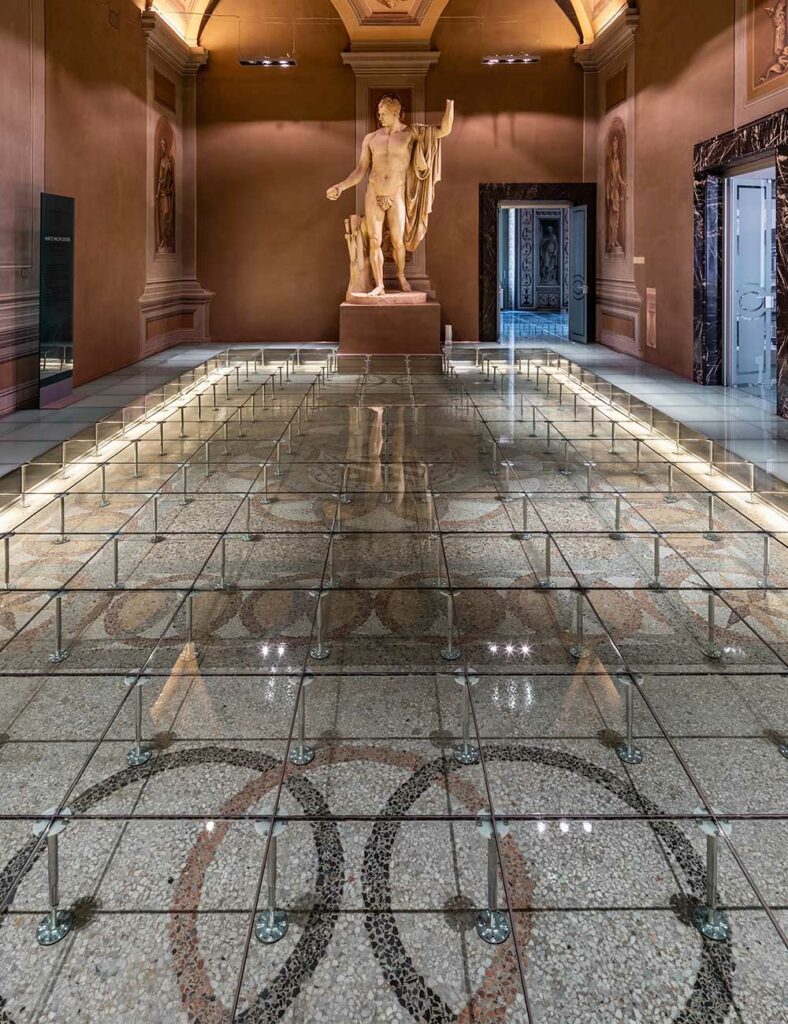
PALAZZO BONAPARTE, Rome
The project required the use of a raised floor made of extra-transparent glass, in order to create a walkable exhibition path, able to protect and enhance the existing mosaic flooring.
